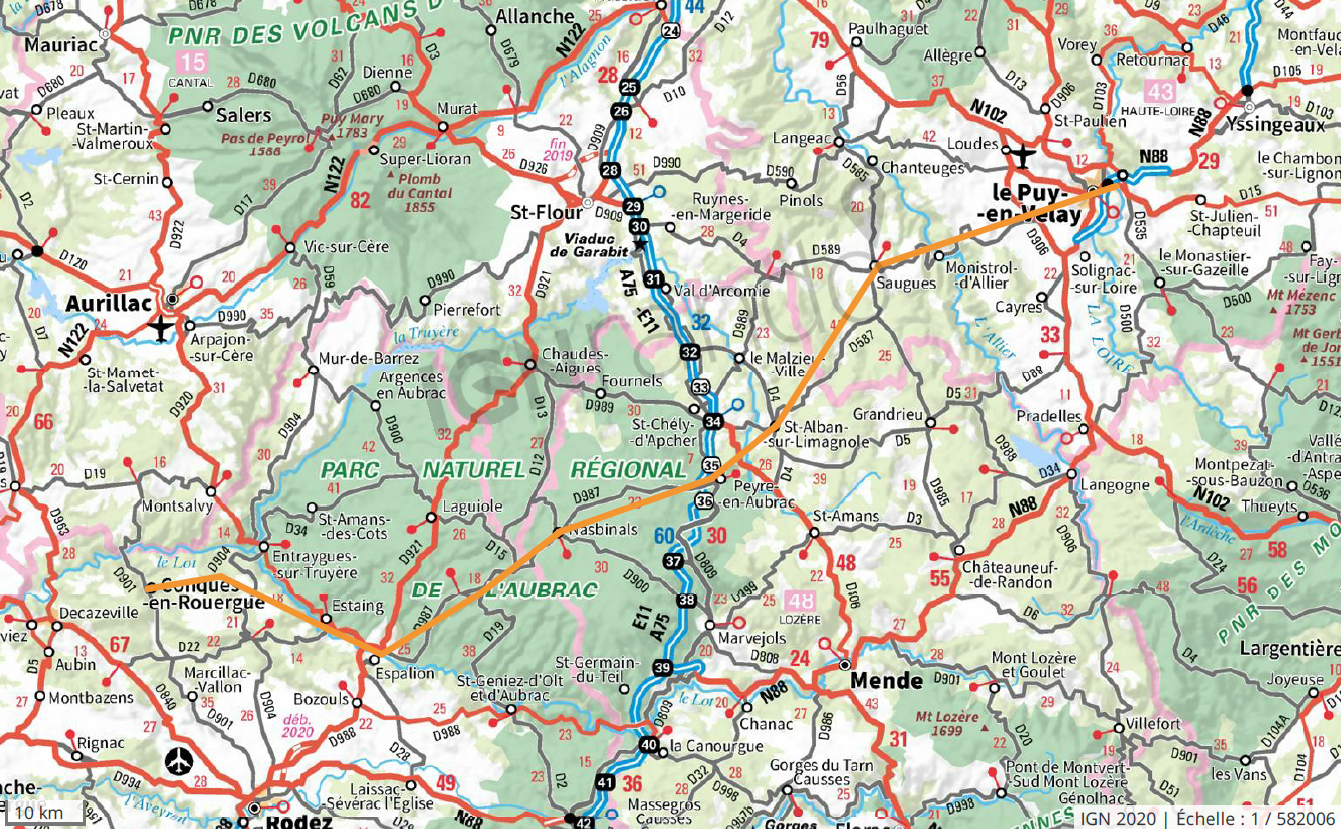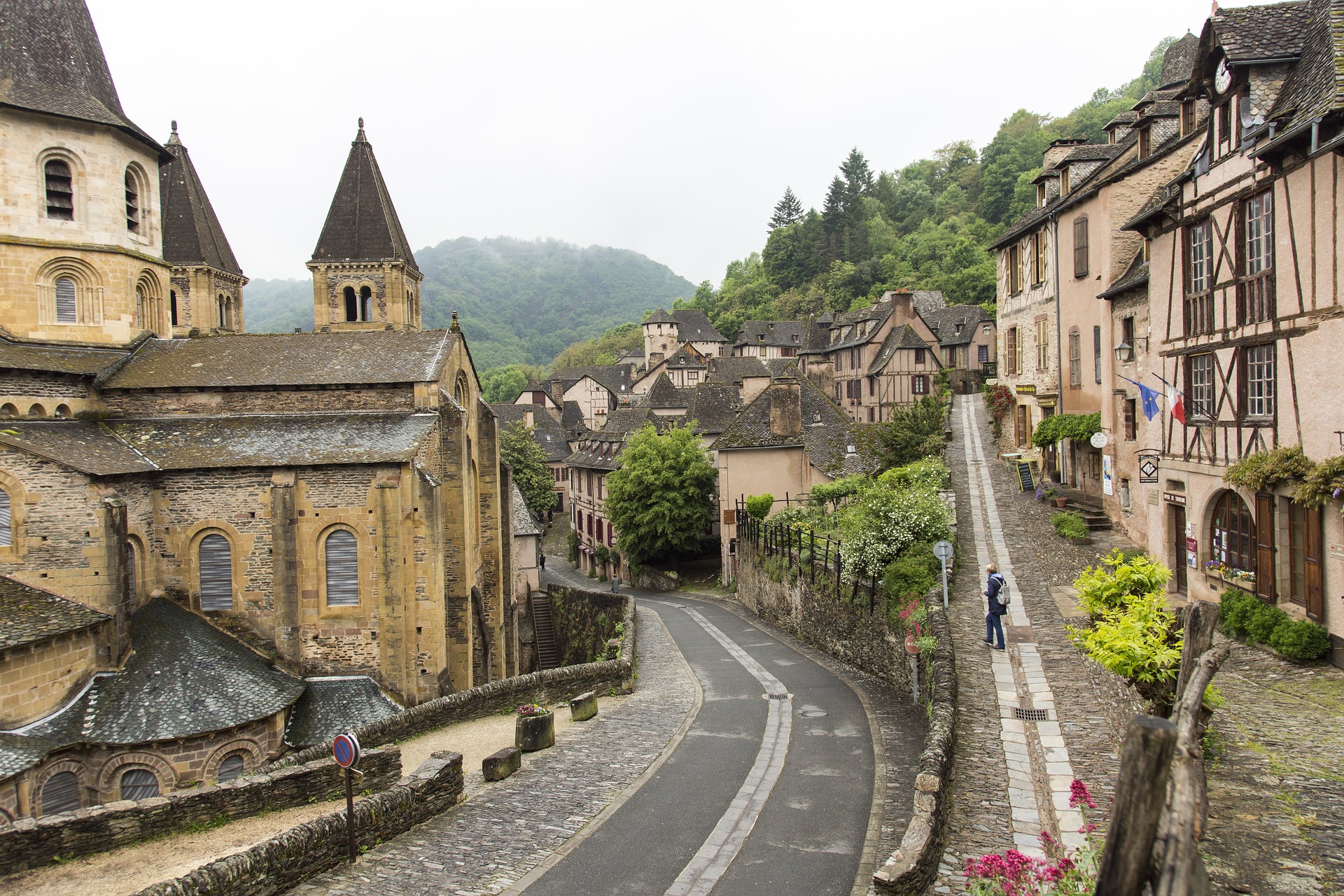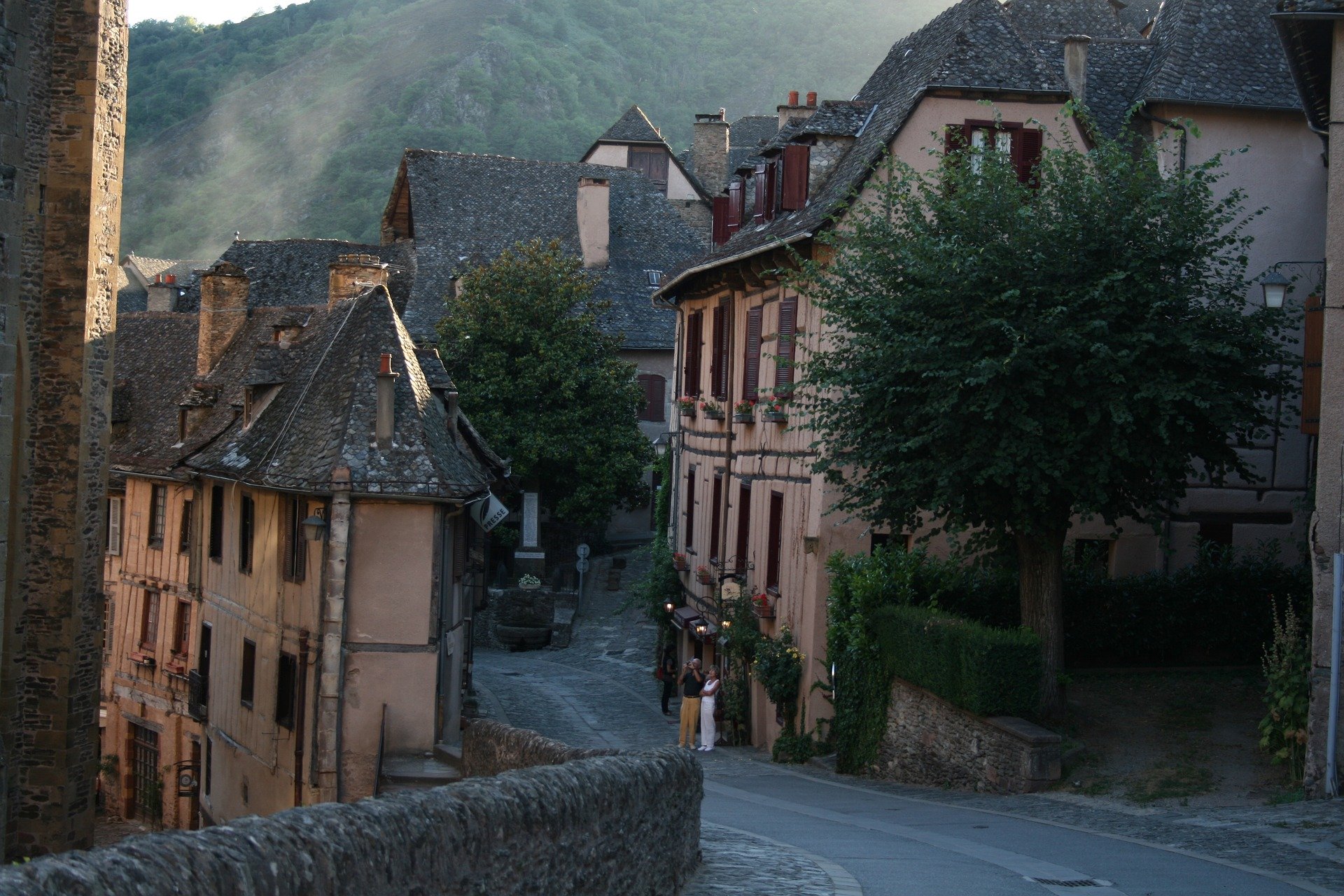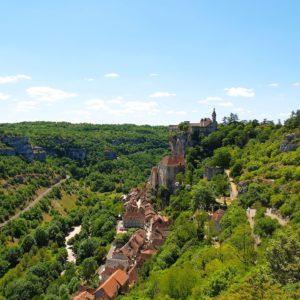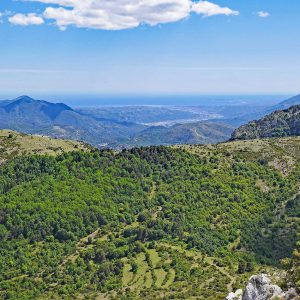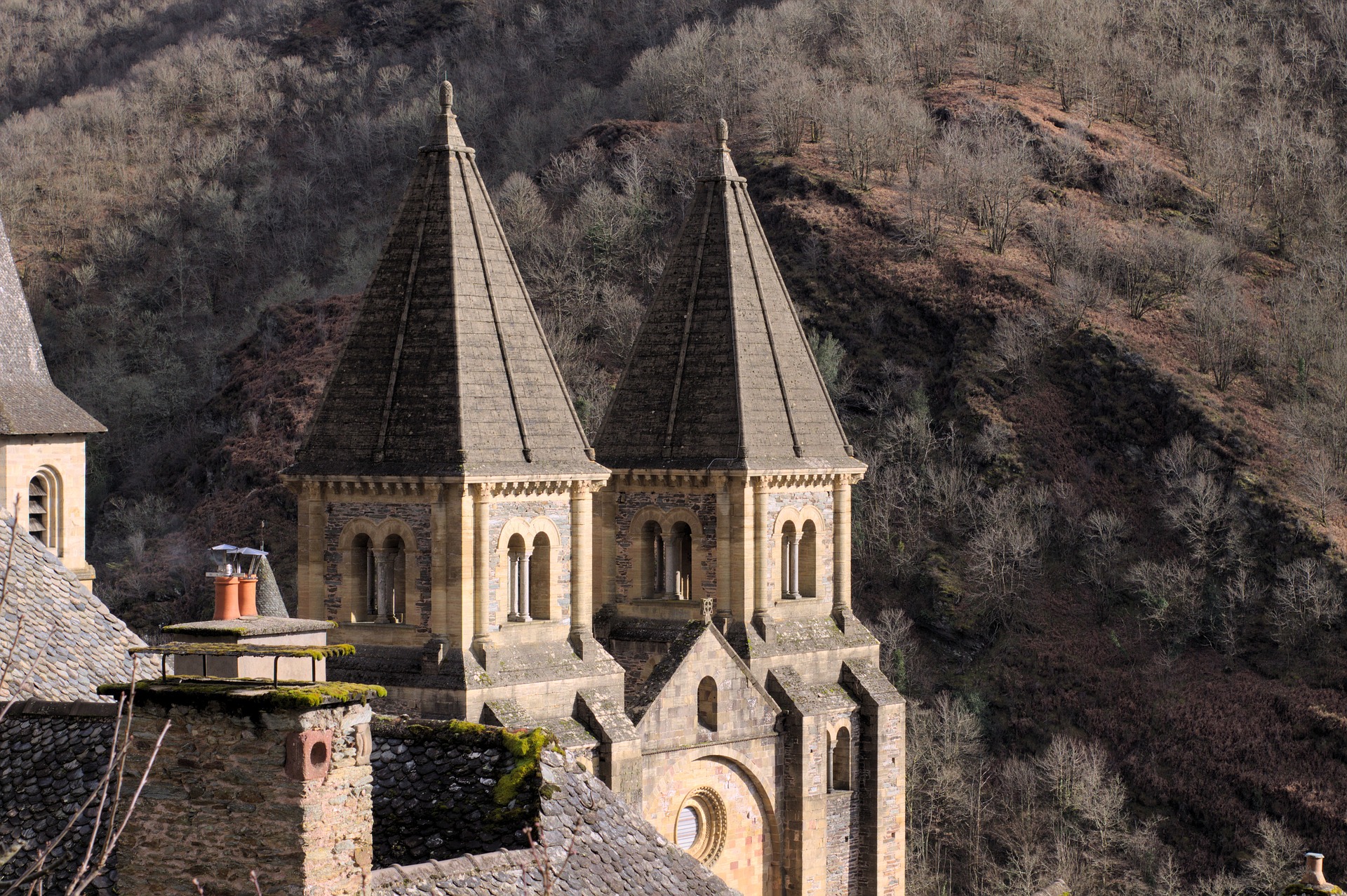
Hiking tour – Way of Saint James – From le Puy en Velay to Conques
Stays in complete freedom without groups or guides, travel differently and with a light mind!
Via Podiensis is one of the four main pilgrimage routes to the Spanish sanctuary of Santiago de Compostela from Le Puy en Velay, a Marian sanctuary since the fifth century. Since the Middle?Ages, millions of pilgrims have left from Le Puy to journey to the Spanish Galicia, at the extremity of the Iberian Peninsula, to venerate the relics of Saint James, one of Christ’s apostles. This pilgrimage is today registered on the World Heritage list of UNESCO.
In the first phase of the hike, you will explore several different regions of France : Auvergne, Margeride, Gevaudan, the Aubrac highlands, charming and scenic in the summer months, but avoided by pilgrims in the cold of winter, when it is covered by snow and fog. In bad weather, the bells of Domerie d’Aubrac (an abbey?hospital) once rang all the day and night long to guide the pilgrims towards this place of refuge. You will go down the Pays d’Olt or the Lot Valley with pleasant cities as Espalion or Estaing.Walking along the heights of the Lot Valley , you will arrive in the lovely city of Conques
Choose your package:

Réserver votre séjour
Select the services you want and click on add to cart. From there, please complete the registration form so that we can organize your trip
Group rate (5 and more) and CE,thanks to contact us
ContactLe circuit
Useful information
Sentiers de France concocts for you a turnkey stay. Your only concern will be to enjoy and hike.
Service
- 11 overnight stops in 1or 2 star hotel or guesthouse on a half-board basis
- Hotel to hotel luggage transfer along the trail
- A set of maps (1/25 000 scale) or topoguide (with translation) with the route marked on and detailed route notes describing the trail
- A daily itinerary together with information about facilities and places of interest along the trail
- Phone emergency assistance 24/24
- Visa fees – transportation fees to and from the walk area – Insurance (strongly recommended on all trips) – Transfers except those mentioned above – Drinks – Entrance fees – Additional meals – Spending of personal nature e.g. laundry, souvenirs, phone calls, are not included
- 11 nights’ accommodation in handpicked 2 star hotels or charming guesthouses
- 11 breakfasts – 11 dinners
- Hotel to hotel luggage transfer along the trail & taxi transfers as written in the description of the itinerary
- A set of maps (1/25 000 scale) or topoguide (with translation) with the route marked on and detailed route notes describing the trail
- A daily itinerary together with information about facilities and places of interest along the trail
- Phone emergency assistance 24/24
- Visa fees – transportation fees to and from the walk area – Insurance (strongly recommended on all trips) – Transfers except those mentioned above – Drinks – Entrance fees – Additional meals – Spending of personal nature e.g. laundry, souvenirs, phone calls, are not included
- 11 nights’ accommodation in handpicked 3-star hotels or charming guesthouses
- 11 breakfasts – 11 gourmet dinners
- Hotel to hotel luggage transfer along the trail & taxi transfers as written in the description of the itinerary
- A set of maps (1/25 000 scale) or topoguide (with translation) with the route marked on and detailed route notes describing the trail
- A daily itinerary together with information about facilities and places of interest along the trail
- Emergency assistance
- Visa fees – transportation fees to and from the walk area – Insurance (strongly recommended on all trips) – Transfers except those mentioned above – Drinks – Entrance fees – Additional meals – Spending of personal nature e.g. laundry, souvenirs, phone calls, are not included
Restoration
- Catering service is offered for this hike
Level 3/4
- Grade 3 – walks of between 5 and 8 hours a day with ascents up to 700 m
- Some hiking experience is advisable. A reasonable level of fitness and some stamina are required for these walks
- You may cover long distances in remote countryside and the terrain will be rough underfoot. In mountainous areas you will encounter some sustained ascents and descents
Hosting
- Lodging is proposed on this hike
Access
- Nearest Airport: International Lyon St Exupery airport or Paris CDG . Back from Rodez airport with domestic flights to Paris or Lyon
- By car: Drive to Clermont Ferrand along A71 motorway. Get off exit 20 and go to Le Puy along N102 road via Brioude
- Where to park: toll secured underground car park. Special rate for one week or more
- By train: Le Puy is well served from the main French rail stations with connections at Lyon, Clermont-Ferrand or St Etienne. From Conques, links by bus or shared taxi to La Française or Rodez train stations where you catch trains to Paris
Best period
- From April to middle of October but be careful this trail is more and more popular and we recommend to reserve earlier to get (the best) rooms. Best time is May, June and September
solitaireRate / Person
You will also like
according to your tastes and desires
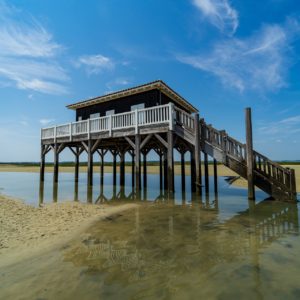
Hinking tour – Arcachon basin
Looped walking circuit in Aquitaine along the Arcachon basin
8 Days
Level
2/4
Mer
1380€
Lorem ipsum dolor sit amet, consetetur sadipscing elitr, seddiam nonumy eirmod labore et dolore magna ali.
view more


